

2009 Condition: 2. 'Stable but needs minor work'

1. History and description.
To the west of this section a series of low walls of mixed construction (opus mixtum, coursed and uncoursed limestone and spolia) pruning north /south between the temenos wall and the present day path around the site. Towards the east of this section the walls run diagonally as well as north/south, the diagonal walls forming a boundary to the entrance road into the gate through the temenos wall.
The temenos wall is constructed of massive hellenistic masonry, isodomal in the main but occasionally polygonal.

1. Area south of temenos wall (October 2007)

2. Shows diagonal entrance road and gate through temenos wall- also ill-advised concrete arch construction erected in 2007, now demolished.
2. Environment.
South of the temenos wall the water rises above ground level for the wetter part of the year. This does not affect the masonry but does create a very fertile environment for vegetation which grows rampantly. Moss grows on the south facing wall surfaces but this is only visually detrimental.
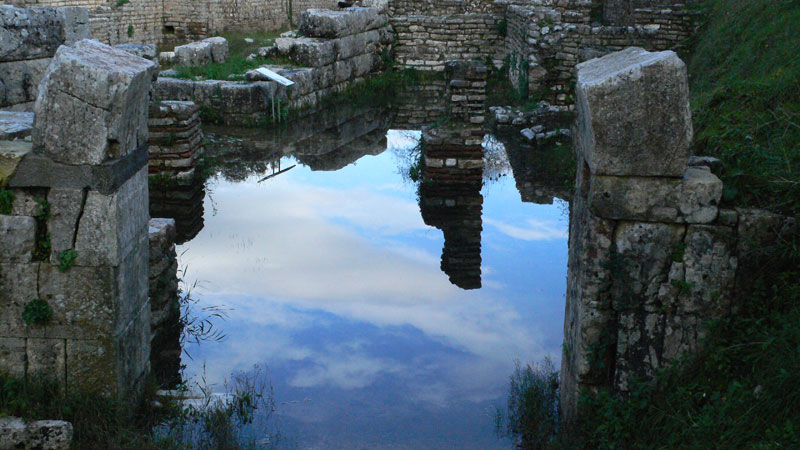
3. Water levels south of the temenos wall (October 2007)
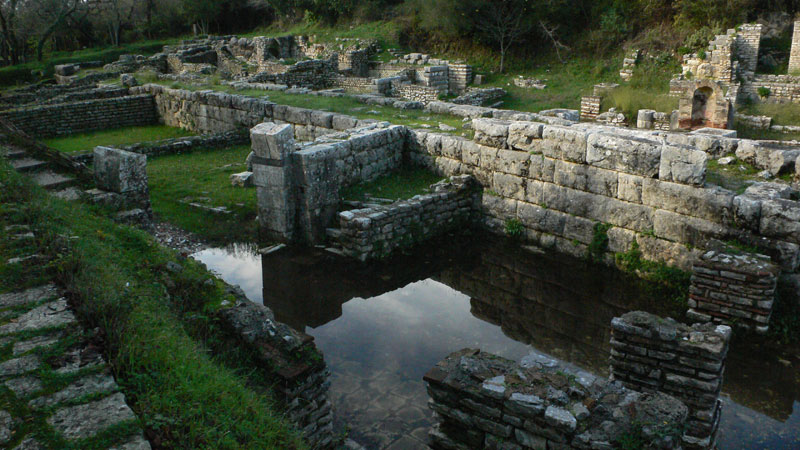
3. Materials and construction
Mainly limestone throughout with some brick courses. Walls mainly bonded with mortar but some appear to have earth matrices. The appearance of earth in a wall can be deceptive, especially where the wall has been buried and excavated. It is possible that the wall was originally mortared, but that this mortar has been lost and the voids filled with earth during burial.
4. Previous conservation.
There is no obvious evidence of previous conservation in the area south of the temenos wall. The one element which has been altered is at the bottom of the sloping stairway from the main path where the entrance has a pair of springing stones either side of an entrance suggesting the previous existence of a semi circular arch. This was the site of an attempt at reconstruction where a concrete arch was formed (see photo above) in early 2007 and then swiftly demolished. The remains of this folly can be seen in the concrete pad upon which the springing stone to the left sits.
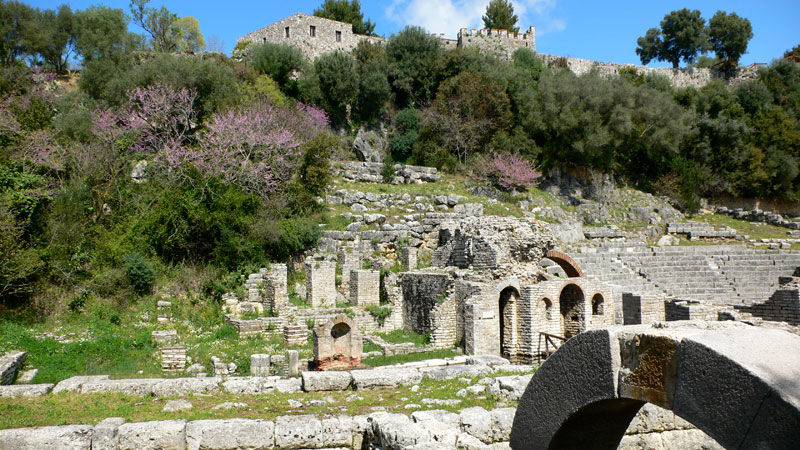
4. Top of reconstructed arch (now demolished) (April 2007)
5. Structural stability and present condition.
South of the temenos wall is part of the large theatre/agora complex and the central part of the 'visitor experience' at Butrint. It is therefore the area which has the highest level of maintenance attention in the way of weeding, strimming etc. This part of the city is the only part which also functions as a place of entertainment. This means more visitors and more traffic both of visitors and technicians etc carrying sets and equipment. Pathways are stressed and visitors create their own pathways, often clambering over masonry.
In general the masonry is in good condition. There are some areas of mortar loss, notably at ground level where the joints are subject to the fluctuating water levels. At the west end there is one wall where a second phase of the wall sits imperfectly above the earlier phase (fig 6), leaving some overhanging masonry. Some of this is loose.
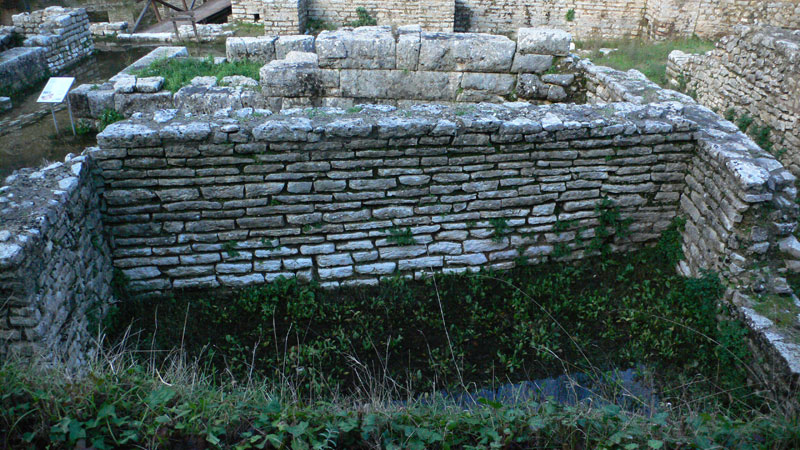
5. Loose and lost pointing at low level (October 2007)
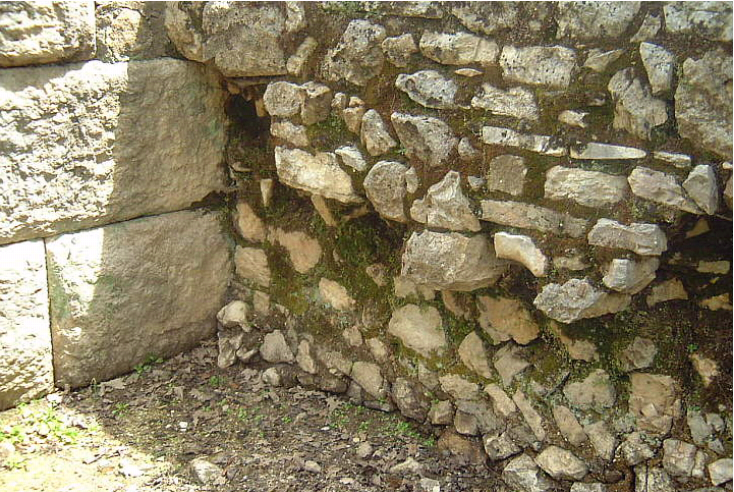
6. Overhanging section of wall
6. Recommendations
| Reference Number | Recommended work |
Priority |
| 24.7.1.
|
Removal of all woody growth and encroaching vegetation. herbicides must be used only with great caution and precision in this area to avoid harm to aquatic life. Areas enclosed by walls should be regularly strimmed. | A |
| 24.7.2. | Check all masonry both stone and brick for loose stones/bricks where there are areas of missing or loose pointing. rebed loose materials and repoint deeply voided joints. | B |
| 24.7.3. | The area photographed (fig 6) needs careful corbelling if loss of fabric is to be avoided. This would best be done in stainless steel or phosphor bronze, but if these are unobtainable some cruder and more visible method will have to be contemplated. | B |